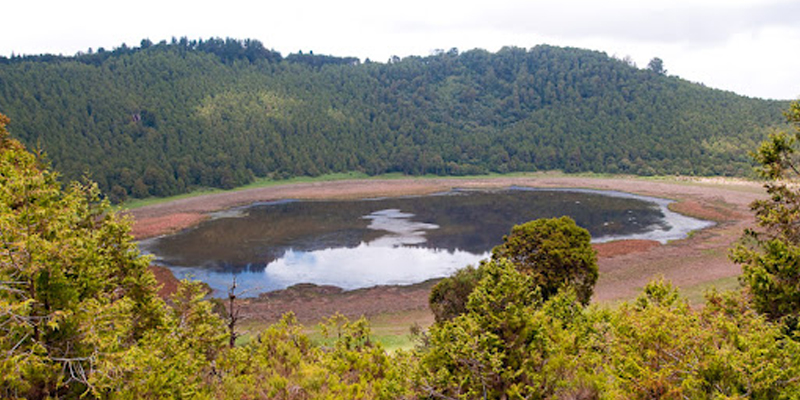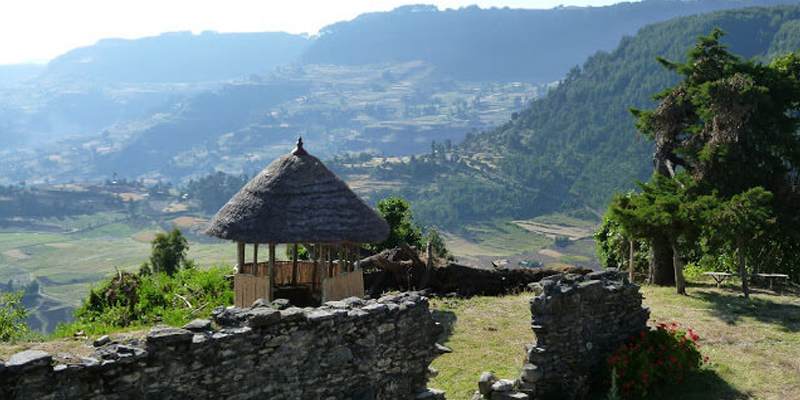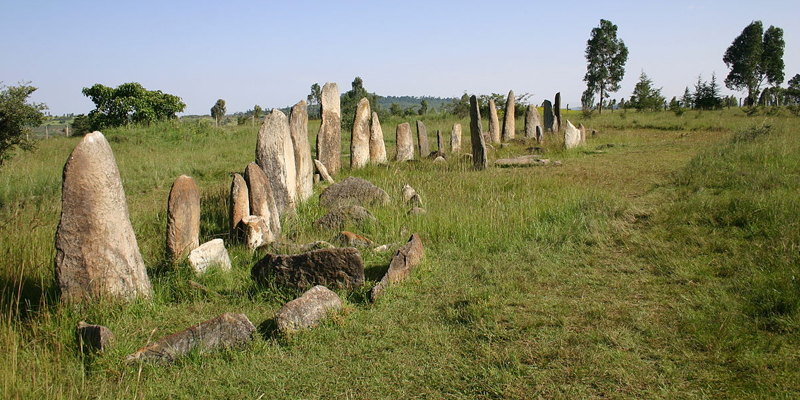With an estimated population of over 5 million, and located on the horn of Africa, Addis Ababa is the capital city of Ethiopia and seat of African Union, the united Nation Economic Commission for Africa, over hundred and fifty embassies, consulates and many other international agencies. Addis Ababa is located more or less at the center of the country with an altitude of 2440 m above sea level, which makes Addis Ababa the third highest located capital city in the world. The history of the metropolis is very much knitted with the modern history of the country dating back to 1887 when emperor Menilik and his wife Empress Taytu moved their capital from Ankober in the north shoa further south to Entoto plateau in search of a strategic site that would enable him to have a better vantage point for the fortification of the capital. It is believed that Taytu, who noticed the scarcity of fuel wood and water at the chilly site of Entoto plateau proposed to her husband to move the capital from Entoto to its present location. She enjoyed the warm spring bath at” filwoha” (hot water) and appreciated the beauty of the site and the Mimosa Flower where upon she named the new capital “Addis Ababa “which mean ‘New Flower.


Taking the historic route North from Addis Ababa at the first stop is Debre Libanos,110 kilometer north of the capital. Here you can find reminder of Saint Tekle Haymanot, the 13th century holy man, who stood on one leg for 7 years in a cave at Debre Libanos. A wonderful modern cathedral marks this spot, the center of the Ethiopian Orthodox church for hundred years. Nearby an old Portuguese bridge is visible from the road.

Only 45 kilometers away from the outskirts of Addis Ababa, the small town of DebreZet is an ideal place for the excursionist to spend a wonderful relaxation time. It is easy to make a day trip with quite atmosphere and environment to refresh your mind while you are still not far away from the capital city. The place provides an opportunity to view several rift valley lakes and birds surounding its environment. There are very luxurious lodges on the lakeshore as well as simpler hotels.

A huge volcanic cone set isolated in the surrounding plain and rising 600m Zuquala’s crater is still perfectly preserved. Two kilometers across and sixty meters deep the crater is occupied by a shallow lake, well known as a holy lake. For many centuries the rim has been the site of a monastery. During the war between chrstian highland kingdom and muslim destroyed some part of the buildings but it was rebuilt and still in use today. The inside rim of the crater is covered with juniper forest, the frequent swirling mists encourage a heavy growth of trailing lichens and the beautiful black and white colobus monkey can sometimes be seen, adding yet another dimension to this already picturesque place.

Describe as a green paradise, found 157km to the west of Addis Ababa, Wonchi is a breath taking place. The small monastery on the Island named St kirkos monastery is said to have been built by Emperor Zara Yakob in the 15th century. Around the crater it is possible to walk, enjoy and spot on the interesting bird life surrounding the lake.

A little old town located 160km north east of Addis Ababa, it was Menelik.II ‘s capital center before he moved to Entoto. In 1886 Menelik decided to move the capital to its current location, Addis Ababa. Ankober was the ancient capital of the Kingdom of Shoa, with Merid Azmatch Amha Iyesus (1745-1775), a ruler descended from the Solomonic dynasty, credited as being the founder. His descendants ruled out from Ankober almost for a hundred years.
During the reign of Emperor Menelik II, after the battle of Adwa 1896 Britain, France and Italy made a diplomatic relationship at Ankober, the former Ethiopian political center before Addis Ababa and the sites of their missions can still be distinguished. The place is the view point to look the bird view of the great east African rift valey.
There are many famous Ethiopian Orthodox monasteries and churches in the area surrounding Ankober, including Mantiq a nearby monastery with Judeo-Christian traditions. From the former palace of emperor Minilik II., Ankober look the spectacular view of the great Rift Valley.

Melka kuntere is a Paleolithic site in Ethiopia which is located 50 km south of Addis Ababa by road, across the awash river from the village of melka kuntere Awash. The waterfall lies downstream of the bridge across the Awash here, which provides access south to Butajira. A museum was built at the site, consisting of four buildings of exhibits - one on Prehistoric Africa, another on Geology and Volcanology, a third on Paleoanthropology, the fourth on the Prehistory of Melka Kunture - and the "Open Air Museum", which displays the excavation of two Acheulean sites that have been dated to 0.8 Million years Before Melka Kunture.

Tiya stelaes are part of an archaeological site located in the central part of Ethiopia, only 89 km far from the capital city and it is classified by UNESCO as a World Heritage Site, where we can see the northernmost example of a peculiar type of engraved, standing stelae which stretch across parts of southern Ethiopia.

Awash National Park is Ethiopia’s oldest national park and one of the most rewarding for nature lovers. Awash is located at the southern tip of the Afar Region, 225 kilometers east of Addis Ababa. The south boundary of the park is formed by the Awash river which swings north soon after leaving the park and eventually disappears into the Afar (Danakil) region. The Park covers an area of 827 square kilometers, most of it lies at an altitude of 900 meters. In the middle of the park is the dormant volcano of Fantale, reaching a height of 2007 meters at its top.
It is one of Ethiopia's most popular and interesting national parks. One of the advantage of the Awash National Park is that it is easily reached from Addis Ababa, located on the main Addis-Djibouti highway, which bisects the park. The main road from the town of Metehara leads to the park headquarters and the campsites, both of which are situated near the dramatic Awash Falls where the river enters its gigantic gorge.
The park is traversed by a series of well-maintained tracks, which take in the most spectacular of the many scenic attractions. One of the main features is the Fantale volcano, on the southern flank of which can be seen the dark scar of the latest lava flow of 1820. The mountain slopes hold evidence of sixteenth-century habitation, seen as remains of walls and settlements of considerable proportion. The interior of the mountain-top crater — with its wispy white breath of steam vents — is still used by the local people, the Kereyu, for grazing livestock on a seasonal basis.
Another feature of the park are the hot springs in the extreme north. The water of these springs and rivers is in the region of 36°C (97°F) and is used by the local people to water stock.
The plains to the south of the main road are excellent for animal viewing and are bordered to the south by the Awash Gorge, Plunging 250 meters (820 feet) to the river. The western end of the Gorge is marked by the Awash Falls, which can vary in intensity from a murky reasonable flow to a raging chocolate-coloured torrent, depending on the rainfall and the activity of the hydro-electric scheme above it.
Awash's wildlife reflects its dry nature: The Beisa Oryx inhabits many of the more open areas, and greater and lesser kudu the bushed areas. Summering’s gazelle has distinctive white rumps and are often seen with the Oryx. A small population of the endemic sub-species Swayne’s hartebeest was translocated here and occupy the grass plains. The liny Salt's dik-dik appears frequently under the dry acacia bushes and Defassa waterbuck are seen in the bushy river area. There are two species of baboon — the Anubis and the hamadryas. Though each has very different social structures, they hybridize near the river. Other monkeys are colobus in the riverine forest, and grivet in drier areas. Fan tale crater provides a different habitat, supporting mountain reedbuck and klipspringer. Crocodile and hippopotamus splash in the Awash River and in the cooler parts of the springs and rivers in the north. Lion, leopard, serval, caracal, and wildcat are all seen infrequently.
The birds are numerous, more than 300 species on record. The campsites are an excellent place to sight birds and It is the perfect place for the bird lovers to see diversified of bird species such as: Greenwood-hoopoes, red-and-yellow barbets, bee eater, bustard species, secretary, Fish eagles, tawny eagles, lanner and pygmy falcons, immense lammergeyer and etc.

+251918040958
historicabyssinia@gmail.com
teodrosnegesse16@gmail.com